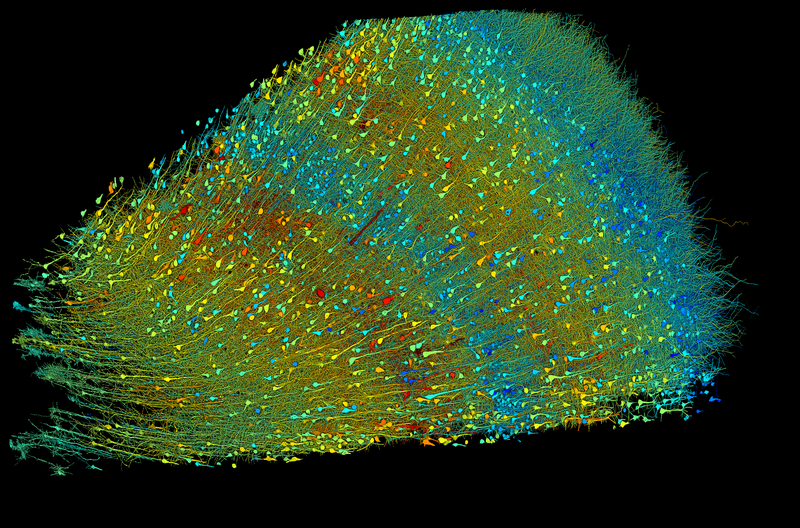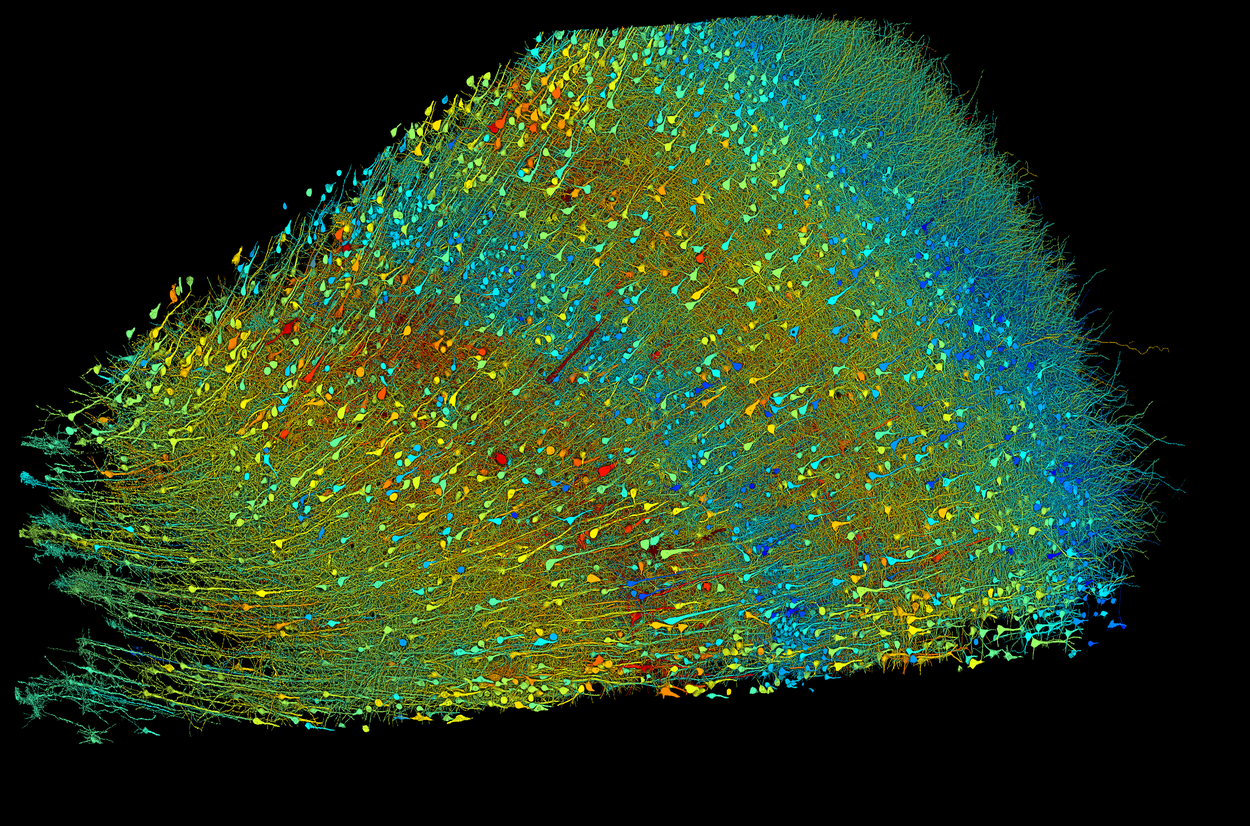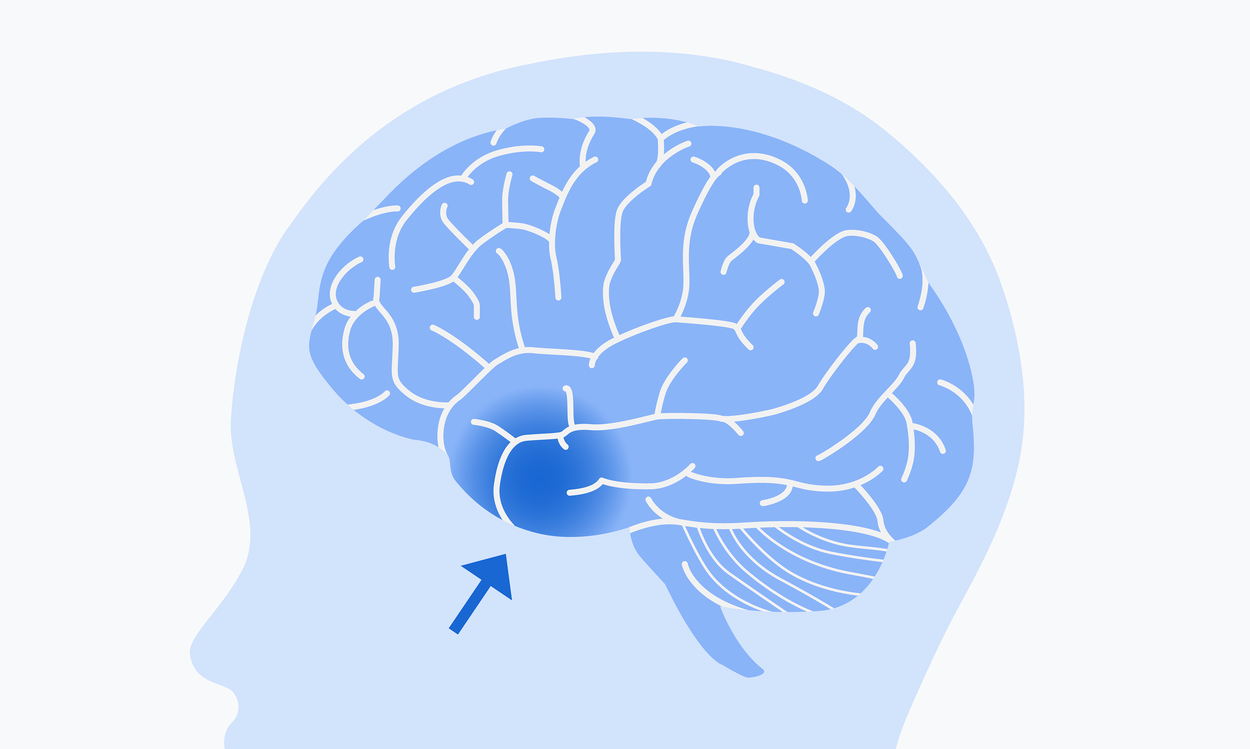
Blog test Ten years of neuroscience
June 2, 2024
Viren Jain, Research Scientist and Technical Lead, Connectomics at Google
Marking ten years of connectomics research at Google, we are releasing a publication in Science about a reconstruction at the synaptic level of a small piece of the human brain. We discuss the reconstruction process and dataset, and we present several new neuron structures discovered in the data.
Quick links
testing h3
testing h2
This is H2
Lorem ipsum dolor sit amet, consectetur adipiscing elit, sed do eiusmod tempor incididunt ut labore et dolore magna aliqua. Ut enim ad minim veniam, quis nostrud exercitation ullamco laboris nisi ut aliquip ex ea commodo consequat.
This is H3
Lorem ipsum dolor sit amet, consectetur adipiscing elit, sed do eiusmod tempor incididunt ut labore et dolore magna aliqua. Ut enim ad minim veniam, quis nostrud exercitation ullamco laboris nisi ut aliquip ex ea commodo consequat.
This is H4
Lorem ipsum dolor sit amet, consectetur adipiscing elit, sed do eiusmod tempor incididunt ut labore et dolore magna aliqua. Ut enim ad minim veniam, quis nostrud exercitation ullamco laboris nisi ut aliquip ex ea commodo consequat.
The human brain uses no more power than a dim incandescent light bulb, yet it can accomplish feats still not possible with the largest artificial computing systems. To understand how requires a level of understanding more profound than knowing what part of the brain is responsible for what function. The field of connectomics aims to achieve this by precisely mapping how each cell is connected to others. Building detailed maps of how brains from many types of organisms are wired is transforming our understanding of how brains work. This could help researchers understand neurological disorders and also answer fundamental questions, such as how memories form.
This year marks the tenth anniversary of the formation of Google Research’s Connectomics research team. We have made connectomes possible through the development of machine learning (ML) algorithms and software tools that process and visualize data at unprecedented scale. Marking this anniversary, today we publish in Science, “A petavoxel fragment of human cerebral cortex reconstructed at nanoscale resolution” in collaboration with Jeff Lichtman of Harvard University and others. Released previously as a preprint, this connectome describes a piece of human brain tissue the size of half a grain of rice that nonetheless requires 1.4 petabytes (1.4 million gigabytes) to encode — including about 16,000 neurons, 32,000 glia, 8,000 blood vessel cells (for a total of ~57,000 cells) and 150 million synapses. This project revealed never-before-seen structures within the human brain that may change our understanding of how our brains work.



Researchers built a 3D image of nearly every neuron and their connections within a small piece of human brain tissue.


Researchers built a 3D image of nearly every neuron and their connections within a small piece of human brain tissue.


Researchers built a 3D image of nearly every neuron and their connections within a small piece of human brain tissue.
test media caption

Researchers built a 3D image of nearly every neuron and their connections within a small piece of human brain tissue. The left image shows excitatory neurons and the right image shows inhibitory neurons. These versions are shaded according to the size of the neurons’ cell bodies (central core), which range from 15–30 micrometers across. The sample is approximately 3 mm wide. Credit: Google Research & Lichtman Lab (Harvard University). Renderings by D. Berger (Harvard University).
Since we published the preprint, we have expanded our suite of interactive, open source tools that enable researchers to investigate the dataset on their own. The ability for other researchers to proofread and refine this human brain connectome is one of many ways that we see the release of this paper and the associated tools as not only the culmination of 10 years of work, but the beginning of something new.
Scaling brain science
The first connectome was published in 1986 — before AI tools existed — for the 302 neurons in the nematode model organism Caenorhabditis elegans. It took 16 years to create it from cross-sectional microscope images of the worm. Researchers manually colored in cells from one cross-section to another to visualize the connections in this simple nervous system.
When the Connectomics team at Google launched ten years ago, we were excited about how innovations in AI and working with large datasets could enable us to move from 302 neurons to the tens of thousands or millions found in more complex organisms. Our work required novel algorithms capable of handling the tremendous amounts of data — now petabytes — these studies generate. We developed flood-filling networks to replace the manual effort of coloring in cells across images. These networks allow automated reconstruction of neurons through layers of tissue. Building on this, our SegCLR algorithm automatically identifies distinct parts of cells and cell types within these networks. We also developed TensorStore, an open-source C++ and Python software library to store and manage massive multi-dimensional datasets. This tool has realized benefits well beyond connectomics and is now widely used at Google and across the broader ML community.
We first demonstrated these algorithms when we released the connectome for the “hemibrain” of the fruit fly Drosophila melanogaster in 2020. Revealing the connections among 25,000 neurons in a central portion of the fruit fly brain, this reconstruction has been used by other researchers to make findings about learning, memory, and behavior in the fruit fly. Groups have since published hundreds of papers that build on the fruit fly connectome.
Through collaborations with researchers at the Howard Hughes Medical Institute, Harvard University, and Max Planck Institute we have also published connectomes for portions of the brains of the zebra finch and zebra fish larvae.
In the work published today, our team reports a new milestone: a synaptic-resolution reconstruction of a 1 cubic mm piece of human brain tissue. Our collaborators generated the dataset using a sample of brain tissue from the left anterior temporal lobe that was removed during brain surgery on a person with epilepsy. Lichtman’s team used a multibeam scanning electron microscope to gather high resolution images of more than 5,000 slices of tissue, each roughly 30 nanometers thick. Image acquisition alone took 326 days. Then our team’s tools stitched and aligned the image data, reconstructed the three dimensional structure of each cell, including its axons and dendrites, identified synaptic connections, and classified cell types. The reconstruction revealed several surprises.

The brain tissue sample used in this research came from the left anterior temporal lobe.
For example, we found a class of rare but extremely powerful synaptic connections in which a pair of neurons may be connected by more than 50 individual synapses. While 96.5% of contacts between axons and their target cells have just one synapse, 0.092% have four or more synaptic connections. The conformation of these connections combined with refined statistical analysis that is part of the Science publication suggests that these powerful connections are not the result of chance, but rather that these pairs had a reason to be more strongly connected than is typical. Further study of these connections could reveal their functional role in the brain. Perhaps, for example, these strong connections are how the brain achieves particularly fast neural responses or how it encodes very important memories.
The deepest layer of the cortex contains clusters of cells that tend to occur in mirror-image orientation to one another.



